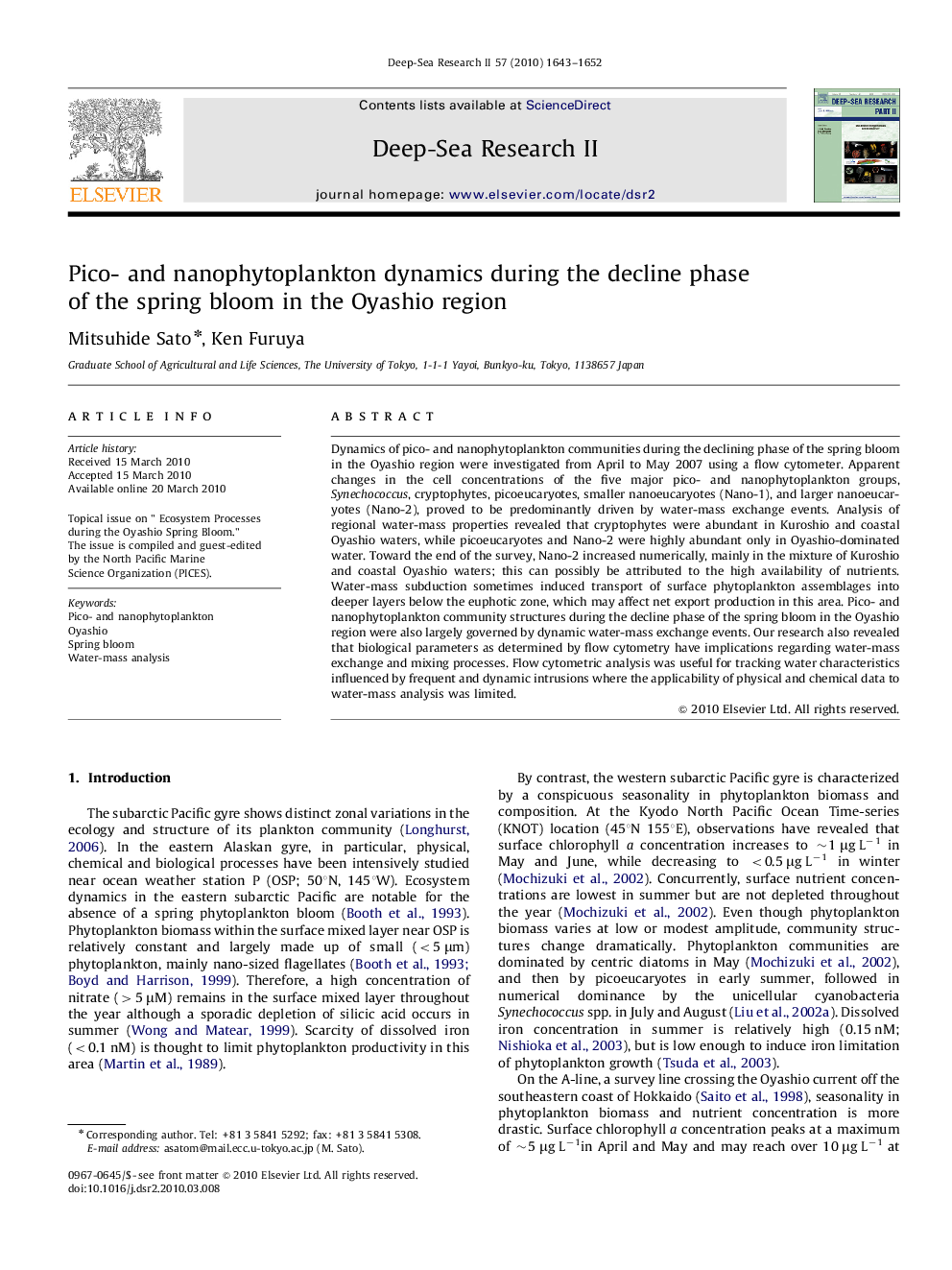| Article ID | Journal | Published Year | Pages | File Type |
|---|---|---|---|---|
| 4537412 | Deep Sea Research Part II: Topical Studies in Oceanography | 2010 | 10 Pages |
Dynamics of pico- and nanophytoplankton communities during the declining phase of the spring bloom in the Oyashio region were investigated from April to May 2007 using a flow cytometer. Apparent changes in the cell concentrations of the five major pico- and nanophytoplankton groups, Synechococcus, cryptophytes, picoeucaryotes, smaller nanoeucaryotes (Nano-1), and larger nanoeucaryotes (Nano-2), proved to be predominantly driven by water-mass exchange events. Analysis of regional water-mass properties revealed that cryptophytes were abundant in Kuroshio and coastal Oyashio waters, while picoeucaryotes and Nano-2 were highly abundant only in Oyashio-dominated water. Toward the end of the survey, Nano-2 increased numerically, mainly in the mixture of Kuroshio and coastal Oyashio waters; this can possibly be attributed to the high availability of nutrients. Water-mass subduction sometimes induced transport of surface phytoplankton assemblages into deeper layers below the euphotic zone, which may affect net export production in this area. Pico- and nanophytoplankton community structures during the decline phase of the spring bloom in the Oyashio region were also largely governed by dynamic water-mass exchange events. Our research also revealed that biological parameters as determined by flow cytometry have implications regarding water-mass exchange and mixing processes. Flow cytometric analysis was useful for tracking water characteristics influenced by frequent and dynamic intrusions where the applicability of physical and chemical data to water-mass analysis was limited.
